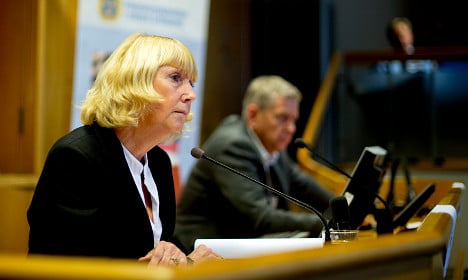St. Valentine’s Day was not associated with romantic love until a poem written by Geoffrey Chaucer in 1382 to celebrate the engagement of King Richard II of England to Anne of Bohemia: "For this was on Saint Valentine's Day, when every bird cometh there to choose his mate", he wrote in marking the occasion.
It's ironic that Richard's and Anne’s marriage gave rise to the most recognizable modern symbol of romance and a celebration of our right to be with the one we love. This was a union for practical and political purposes. It is unlikely that love had much to do with it or that Anne, 15 years old at the time, had much of a say in the matter.
Considering these origins, St. Valentine’s Day is an appropriate moment to think about the 14 million girls under 15 who will be forced into marriage in 2014, and what the EU and its member states can do about it.
Child marriage is most prevalent in South Asia and sub-Saharan Africa, though it take place in all regions of the world. Most typically found in rural areas, it occurs also in the cities. All child marriages have in common that they are arranged in societies where gender discrimination is a brutal, unquestioned reality. In these societies, women and girls are considered property. The violence perpetrated against them is casual and daily routine.
The forced union of children has disastrous consequences for the lives of young girls. They are denied education, enter domestic servitude, are introduced to sex at far too early an age, and become vulnerable to sexually transmitted infections including HIV. They are often exposed to sexual and domestic violence and, in some cases, sex trafficking.
In some regions, their marriage is preceded by female genital mutilation (FGM) and forced feeding. Due to their young age, child brides face higher risks during pregnancy, such as obstetric fistula, because their bodies are not sufficiently developed to carry a child. The child-marriage practice contributes significantly to high rates of maternal and child mortality and morbidity. When the baby does survive, he or she is introduced into a world of dire poverty and, if female, will likely become a victim of forced marriage themselves within a few short years.
Child marriage is a human rights violation that opens the door to a lifetime of many more human rights violations.
READ ALSO: Sweden halts deportation of Pakistani teen threatened with FGM and forced marriage
The ruinous consequences of child marriage reach far beyond the individual. The practice seriously impedes economic growth in developing countries. In contrast, women who marry later in life receive a decent education and are more likely to get a good job and contribute to the economy. Women who have their children later in life are more likely to have healthier and better-educated children and can space their children thanks to family planning.
Yet so deeply embedded are the cultural roots of child marriage that the world has made relatively little progress in tackling it, but with the correct approach this is something we can change.
We are entering a crucial period in the formulation of the international development goals that will replace the Millennium Development Goals (MDGs) when they expire in 2015. Tackling child marriage must become a global priority, included within the post-2015 development framework. Ending child marriage requires a focused and measurable approach, which the visibility of being one of the post-2015 goals can help achieve.
Given the social and economic ruin child marriage causes, not to address the practice would compromise the achievement of a broad range of the other new goals, just as it has done with the MDGs. In the upcoming international negotiations, the EU and its member states must make a strong argument for ending child marriage.
Alongside this, in their multi-lateral and bi-lateral aid programmes, the EU and its member states must include specific goals and indicators for the eradication of child marriage and the gender discrimination that lies at its core. It is only through these external pressures and support that states where child marriage is a problem will introduce the changes necessary to eliminate it.
If we do not change our approach, this medieval practice will continue to destroy lives and hold back economies. And, for the 14 million girls a year who are forced to marry, St. Valentine’s Day will continue to be a cruel reminder of a freedom they are denied.
Cecilia Wikström
Liberal Party (Folkpartiet) Member of the European Parliament



 Please whitelist us to continue reading.
Please whitelist us to continue reading.
Member comments